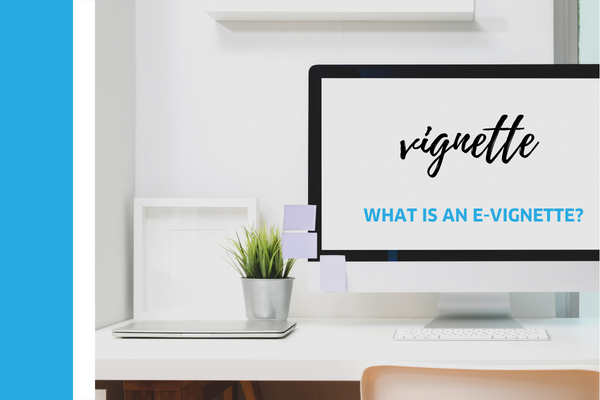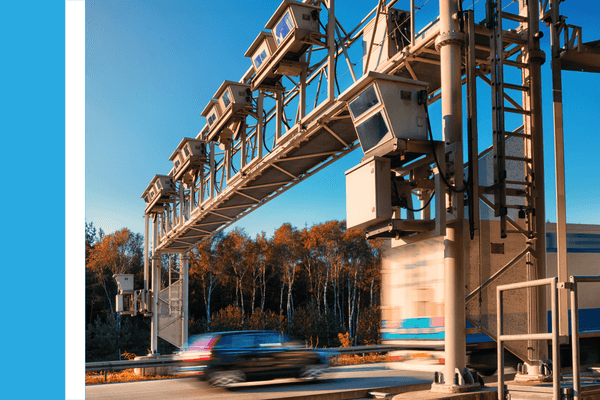What is an e-vignette and how does it work?
The e-vignette is the electronic alternative to the toll sticker. With the e-vignette, the license plate of the vehicle is registered for a certain period of time. There are automatic checkpoints on the highways that check the license plates. Here it is recognized for which license plate an electronic vignette is booked and for which not.
by Florian König, mautwelt.de - May 2nd 2023
For the use of motorways and some motorways in our neighbouring country Austria, road users with vehicles under 3.5 t have required a toll sticker for many years. Since 2018, this toll sticker for Austria has also been available in a digital version, whereby the respective registration number is recorded and stored in the toll system for subsequent checks.
Further information on the digital vignette or e-vignette is presented below.

What is an e-vignette?
A digitale vignette or e-vignette is the modern form of toll payment for motor vehicles with a permissible total weight of up to 3.5 tonnes, which is required for the use of certain sections of motorways and motorways in an increasing number of countries.
In contrast to conventional vignettes, which have to be firmly affixed to the inside of the windscreen, with the e-vignette the registration number of the respective vehicle is recorded electronically and monitored digitally via control cameras on the sections of road subject to tolls.
The e-vignette can be purchased online via websites and is usually valid for a certain period of time, for example one week, one month or one year.
When using toll motorways and motorways, the vehicle is automatically detected during the journey by control cameras that scan the number plate and check whether there is a valid e-vignette for the vehicle's number plate in the toll operator's system.
The digital vignette is currently used in the following countries, among others: Austria, Hungary, Czech Republic, Slovenia, Bulgaria and Romania.
The purpose of the vignette is to make toll collection in the countries more efficient and fairer for all road users. At the same time, it is intended to improve the possibility of monitoring tolls in order to ensure compliance with the toll obligation.
How does an e-vignette work?
An e-vignette works similarly to the conventional vignette for sticking on the inside of the windscreen, but the digital vignette is recorded electronically and is linked to the vehicle registration number.
When you buy an e-vignette, in addition to the registration number of the vehicle for which the vignette is to be valid, you must also specify the desired period for which the vignette is to be valid.
When driving on toll motorways and motorways, cameras are used at irregular intervals to record the vehicle's registration number. The captured data is used to check whether there is a valid e-vignette for the vehicle.
If a valid digital vignette is present, the camera recording is deleted again after a certain period of time for data protection reasons.
If no valid e-vignette is detected, a penalty for using toll sections without a valid vignette is incurred, which is usually higher than the price of a vignette.

If the amount specified in the fine calculator cannot be paid directly, it becomes more expensive. Then an additional fine is imposed, which can reach up to 3,000 euros.
What does a digital vignette cost?
The costs for an e-vignette can vary considerably depending on the country and vehicle category. Below you will find an overview of the costs for a digital vignette as an example for some countries for the year 2023:
- Austria: For passenger cars, an e-vignette costs €8.60 for 1 day, €11.50 for 10 days, €28.90 for 2 months and €96.40 for 1 year. For motorbikes the prices are cheaper.
- Czech Republic: An e-vignette for passenger cars costs €13.30 for 10 days, €18.90 for 1 month and €64.50 for 1 year.
- Slovenia: A digital vignette for passenger cars costs €15 for 7 days, €30 for 1 month and €110 for 1 year.
- Switzerland: There is only one vignette for passenger cars valid for 1 year (= calendar year), which costs € 42.00.
Please note that the prices for e-vignettes may be adjusted at regular intervals. It is therefore advisable to check the current prices and conditions for digital vignettes in the respective country again before travelling.
Further information on prices and availability of e-vignettes is available at mautwelt.de.
There you will also find answers to further questions in our FAQ.
Picture credits: Cover picture © suzesizu / stock.adobe.com &
Notebook-Image © Created via Canva - SEO-Küche & Control station © Ingo Bartussek / stock.adobe.com




